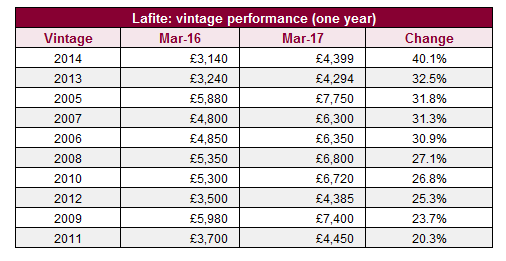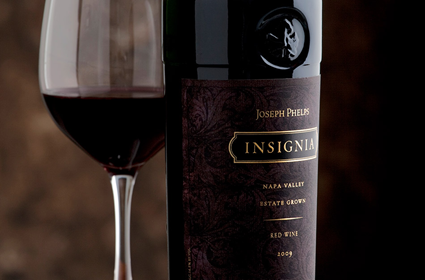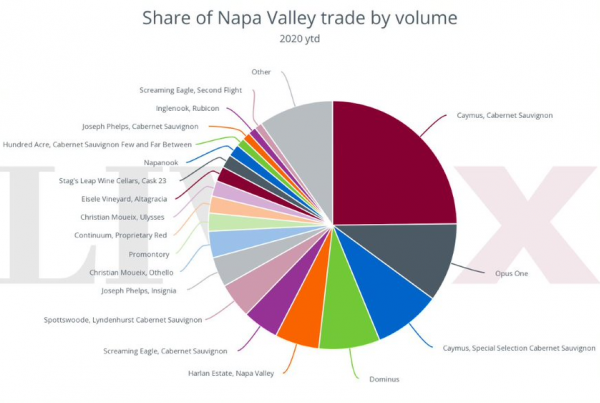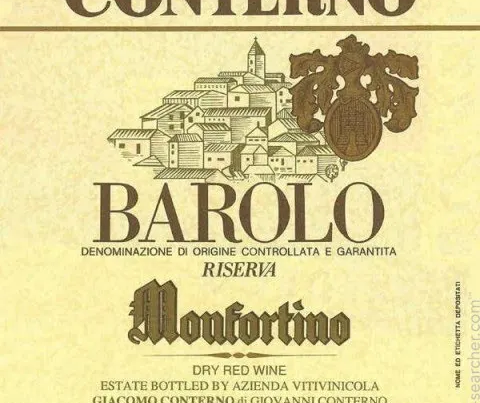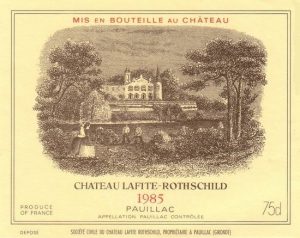
Owner: Baron Eric de Rothschild
Classification: Premier Grand Cru (First Growth)
Vineyard area: 112 hectares
Colour: Red
Standard blend: Cabernet Sauvignon (80-95%), Merlot (5-20%), Cabernet Franc (0-5%), and Petit Verdot (0-5%).
Total annual production: 420,000 to 480,000 bottles
History
Records show that the first vines were planted at Lafite in the 1670s. Early customers included both British Prime Minister Robert Walpole and US President Thomas Jefferson.
In the years following the French Revolution, Lafite changed ownership numerous times until Baron James de Rothschild purchased Chateau Lafite in August 1868. Henceforth the estate became known as Chateau Lafite Rothschild.
The end of the 19th Century and the beginning of the 20th Century were turbulent decades for the Chateau. The vineyard was severely impacted by the phylloxera crisis and mildew, forcing the estate to declassify certain vintages between 1882 and 1915. Furthermore, during World War I the estate was severely impacted by supply restrictions and the financial crisis of the Great Depression led to a reduction in vineyard area.
During World War II, both Lafite Rothschild and Mouton Rothschild were confiscated and placed under public administration. A German military base was then stationed at the two Chateaux for the entire length of the occupation. By the end of 1945, the Barons de Rothschild recovered possession of Lafite and Baron Elie was responsible for re-establishing operations at the estate. A series of excellent vintages in 1945, 1947 and 1949 helped fuel efforts to re-establish Lafite Rothschild. The 1955 vintage was evidence of the wine’s rebirth. The emerging markets in the US in the 1960s, and Asia more recently have continued to help grow Lafite Rothschild into the brand it is today.
Market Performance
During the Asia-led boom for fine wine (2009-2011), Lafite became a ‘super brand’ in China and prices skyrocketed – even more than the other First Growths – as the chart below shows. Over a two-year period, the Lafite index gained over 140%.
The popularity of the brand during this period is perhaps exemplified by price movements for the 2008 vintage. In October 2010 it was announced that the bottle would carry the Chinese symbol of the figure eight, representing good fortune. The market quickly responded with trades 67% higher than in the previous month.
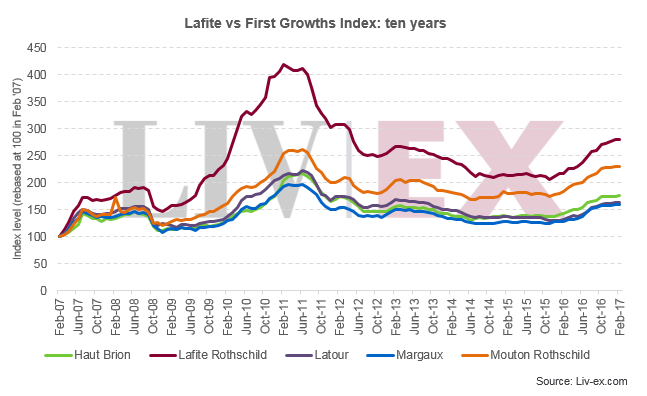
When the market started to roll over in mid-2011, prices for Lafite began to decline. In two years, the index dropped 37%.
Recovery period
At the beginning of 2016, Lafite began to show tentative signs of recovery. It is now the best-performing First Growth over one year, up 29.2%. It has outperformed the Fine Wine 50 which is up 25% over the same period.
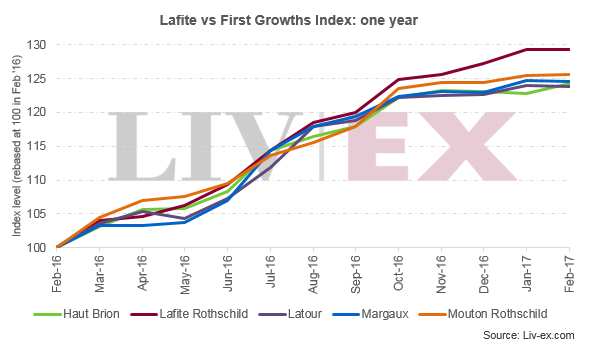
Market Prices
The chart below compares Lafite Market Prices to their Wine Advocate scores. Lafite partly follows the traditional pricing pattern for fine wine, where prices rise as the wine ages and supplies diminish. However critical acclaim also appears to have some influence, with high-scoring vintages such as 2008, 2009 and 2010 commanding premiums.
Buyers willing to wait might consider the 2014 and 2015. The wines have similar scores to older vintages, but their prices are still waiting to catch up. For example, the 2014 vintage is currently trading at a discount of 30.7% to the similarly-scored 2006.
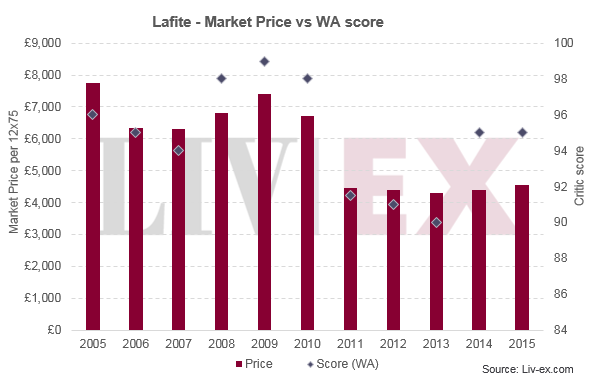
Vintage performance
The recently physical 2014 vintage has been the top performer over the past twelve months, up 40.1%. This time last year the wine was the cheapest vintage available on the market. The similarly priced 2013 vintage followed behind with a 32.5% increase. The 2009 and 2011 have been the slowest movers of the Lafite vintages, up 23.7% and 20.3% respectively.
